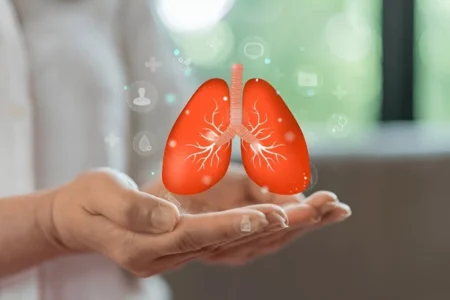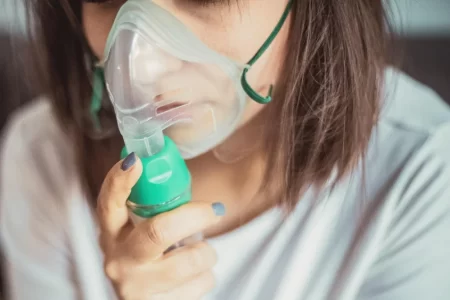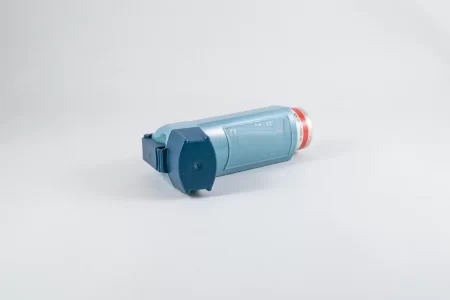Supplemental Oxygen Therapy for COPD Patients
- Updated on: Jul 15, 2024
- 6 min Read
- Published on Feb 10, 2020
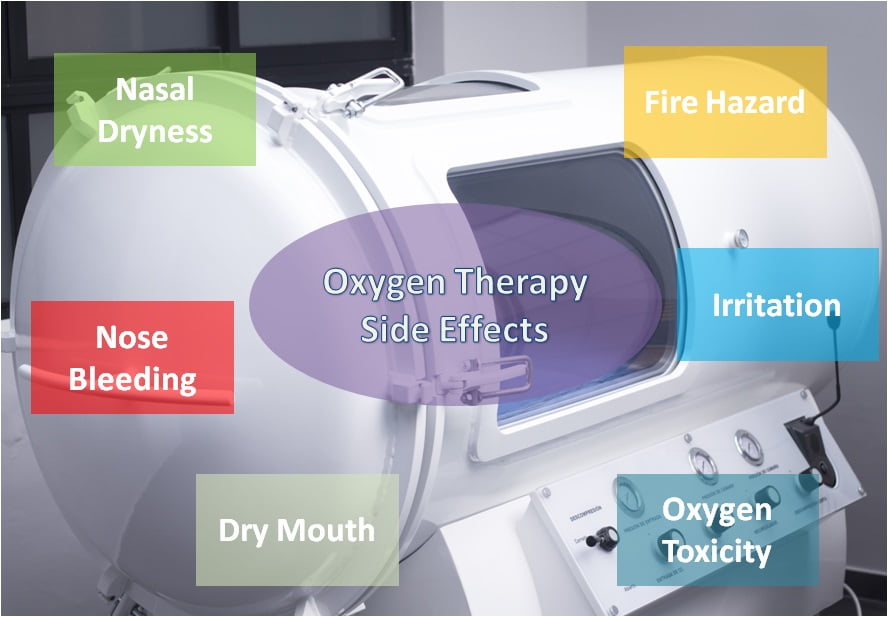
Chronic obstructive pulmonary disease (COPD) includes a group of progressive lung diseases that cause obstructed airflow from the lungs. People suffering from COPD present symptoms like breathing problems, cough, mucus production, and wheezing.
Prolonged exposure to various irritating gases, most commonly cigarette smoke and particulate matter often result in the signs and symptoms of COPD. People with COPD are at an increased risk of developing other serious health conditions like heart disease, lung cancer, etc.
 What is Supplemental Oxygen Therapy?
What is Supplemental Oxygen Therapy?
Oxygen therapy is a treatment that is given to COPD people when they have extremely low levels of oxygen in their blood (hypoxemia). Oxygen therapy is used for providing supplemental or extra oxygen to COPD patients.
Oxygen therapy can be given to patients at both hospitals as well as at home. It helps patients feel better and also stay active. Supplemental oxygen therapy can be a lifesaver for patients with COPD. It is a highly effective way of increasing their declining oxygen levels back to healthy and normal levels.
Besides COPD, some other health conditions may require supplemental oxygen therapy. These include:
- Severe asthma attack
- Pneumonia
- Cystic fibrosis
- Pulmonary fibrosis
- Sleep apnea
- Lung diseases
- Heart failure
According to a report published in PLoS One in 2015, oxygen therapy increased from 33.7% in 2001 to 40.5% in 2010. Sustained oxygen therapy use increased from 19.5% in 2001, peaked in 2008 to 26.9% and declined to 18.5% in 2010.
The majority of subjects receiving oxygen therapy and sustained oxygen therapy were female.
How Can You Benefit From Supplemental Oxygen Therapy for COPD?
Since COPD patients suffer from hypoxemia (low levels of oxygen in the blood), supplemental oxygen therapy brings their abnormal oxygen levels back to the normal and healthy levels so that they can feel better and more active.
Oxygen therapy helps people with COPD in the following ways:
- It reduces breathlessness
- Improves fatigue
- Increases mental alertness and mood
- Improves sleep quality
Who Needs Supplemental Oxygen Therapy?
COPD patients who have extremely low levels of oxygen in the blood are often prescribed for oxygen therapy.
The oxygen levels in COPD patients can be detected by various confirmatory tests such as:
- arterial blood gas test
- pulse oximetry test
These tests help in determining the amount of oxygen that should be supplied to patients, and also how often the oxygen therapy should be given to the patients.
Some people just need oxygen therapy at certain specific times, like when they are sleeping or exercising. People suffering from end-stage COPD often require long-term oxygen therapy.
Patients on long-term oxygen therapy require oxygen supply for almost 15 to 24 hours every day. People on long-term oxygen therapy use portable oxygen delivery units so that they can be active and participate in many of their usual day-to-day activities.
Effects of Low Oxygen Levels in the Body
The decrease in the normal oxygen levels of the body called hypoxemia is often found in COPD patients. Low oxygen levels can affect different body parts of the body and result in various problems like:
- The tubes of the lungs become smaller which strains the heart and it pumps more and more blood. As a result, heart muscles become larger and weaker. Read about enlarged heart.
- The body makes more blood cells than normal which try to deliver more oxygen in the body. Due to lack of enough oxygen, they fail to do so and this can cause blood clots, headaches, and high blood pressure.
- Memory and speech problems
- Difficulty in problem-solving and completing tasks
- Difficulty in exercising due to extreme breathlessness which makes your muscles weaker
- Difficulty in performing normal day-today activities
- Confusions, coma, and even death
Benefits of Using Supplemental Oxygen Therapy
As discussed above, low COPD patients suffer from low blood oxygen levels due to lung impairment. As a result, they need supplemental oxygen therapy for maintaining their normal body functions.
Supplemental oxygen therapy in COPD patients has many benefits. It prevents the chances of heart failure in such patients. It also helps them in improving sleep, mood, mental alertness, and stamina. With the help of oxygen therapy, COPD people are often able to perform their everyday functions normally.
According to a newly published study, people with moderately low blood oxygen levels and suffering with chronic obstructive pulmonary disease (COPD) do not benefit or benefit only little by the use of long-term supplemental oxygen treatment in terms of time to death, time to first hospitalizations or significant quality of life improvements.
Following are some of the benefits of using supplemental oxygen therapy in COPD patients:
Increases Survival
One of the most important benefits of using supplemental oxygen therapy is that it may prolong your life especially if you have a chronic obstructive pulmonary disorder (COPD) with extremely low levels of oxygen in the blood (hypoxemia) and you are on continuous oxygen therapy rather than occasional.
Decreases Your COPD Symptoms
Supplemental oxygen is beneficial for patients as it helps in relieving COPD symptoms like dyspnea, shortness of breath, etc.
It also provides relief from symptoms related to chronic lung conditions like fatigue, dizziness, breathing problems.
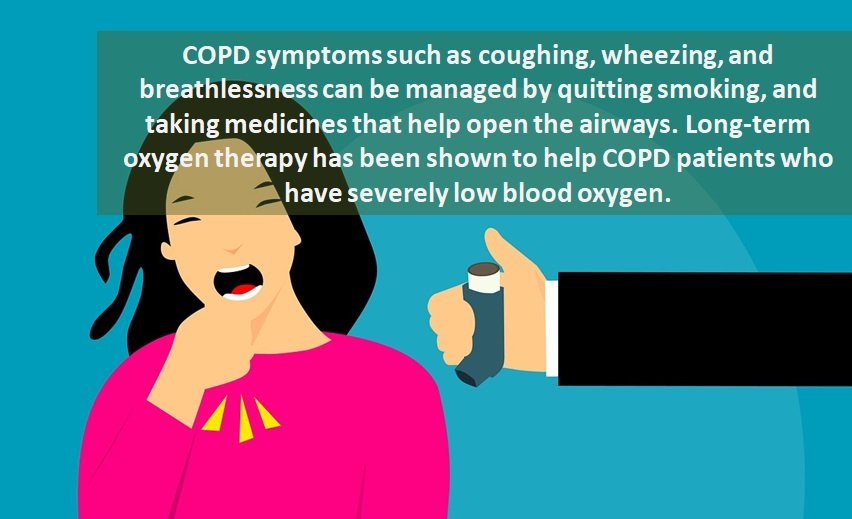
Decreases COPD Complications
COPD is associated with a large number of complications such as heart failure, pulmonary hypertension, polycythemia, etc. The therapy reduces the chances of these complications. It also reduces the number of exacerbations and hospitalizations associated with COPD.
Increases Exercise Tolerance
COPD patients often present breathing difficulties which limit their ability to exercise. Using supplemental oxygen therapy during exercise improves exercise endurance, enhances exercise performance, and also decreases the sensation of breathlessness.
Improves Quality of Life
Supplemental Oxygen therapy is helpful in improving your sleep and mood. It also improves your mental alertness and stamina thereby improving your overall quality of life.
Helps in Your Air Travel
Patients with COPD often experience severe hypoxemia symptoms during their air travel. Using oxygen therapy helps them in avoiding such symptoms and makes their air travel safe and stress-free.
More: Asthma in Children
Side Effects of Oxygen Therapy
Although there are many advantages of using supplemental oxygen therapy, there are some side effects as well, especially if used incorrectly.
Following are some of the side effects of oxygen therapy:
Skin Irritation and Nasal Dryness
Supplemental oxygen therapy has a drying effect on the nasal passages. It results in nasal dryness, skin irritation, and skin  breakdown. Using nasal gels and lubricants can help in avoiding nasal dryness. If you feel any discomfort, you should let your doctor know about it to avoid worsening of the symptoms. Your doctor will understand the cause of the discomfort and make necessary change in the therapy.
breakdown. Using nasal gels and lubricants can help in avoiding nasal dryness. If you feel any discomfort, you should let your doctor know about it to avoid worsening of the symptoms. Your doctor will understand the cause of the discomfort and make necessary change in the therapy.
Chances of Fire Hazard
Although oxygen gas is not much flammable, it helps in combustion which means its presence may lead to fire incidents if not used correctly. People on oxygen therapy should be very careful while using it. For avoiding any fire incidents, following things should be taken care of:
- Avoid smoking when you are using your oxygen cylinder
- Avoid using oxygen cylinder near any open heat source
- Avoid using petroleum containing personal products
Oxygen Toxicity
People on long-term oxygen therapy may develop oxygen toxicity with symptoms like coughing, and shortness of breath due to irritation of airways. People who are at increased risk of oxygen toxicity are ventilator patients, premature infants, etc.
Other side effects of Oxygen Therapy
Some other side effects of oxygen therapy are:
- Dry mouth
- Nose bleeding (epistaxis)
- Runny nose (rhinorrhea)
- Sore nose
- Nasal sores
FAQs
Does Everyone With COPD Require Oxygen Therapy?
No. Oxygen therapy is given to only those COPD patients who have a low oxygen level in their blood (hypoxemia). All COPD patients do not suffer from hypoxemia; therefore they don’t need supplemental oxygen therapy.
How Will I Know If I Need Oxygen Therapy?
Different confirmatory tests like arterial blood gas test and pulse oximetry test help in determining the oxygen levels in your blood. Your doctor will recommend you for these tests after knowing your symptoms. If your blood oxygen levels will be low you will be recommended oxygen therapy, otherwise if your oxygen levels will be normal then there is no need for oxygen therapy.
Does Being on Supplemental Oxygen Therapy Mean I’m About To Die?
No. Being on oxygen therapy does not mean that you are critical and about to die. There are many people on oxygen therapy from several years. Oxygen therapy is just for maintaining your blood oxygen levels and increases your survival.
Is Sleeping With Oxygen Therapy Safe?
Some people with COPD feel breathlessness during night and often require supplemental oxygen therapy for improving their declining oxygen levels. Oxygen therapy is useful for people with different conditions causing hypoxemia like sleep apnea, COPD, and lung disease. Using therapy relieves symptoms of breathlessness and is safe.
What is Oxygen Toxicity and what are its Symptoms?
People who are on long-term oxygen therapy develop oxygen toxicity that may affect their central nervous system. There are many symptoms of oxygen toxicity like coughing, nausea, ringing in the ears (tinnitus), and behavioral problems such as irritability, anxiety etc.





